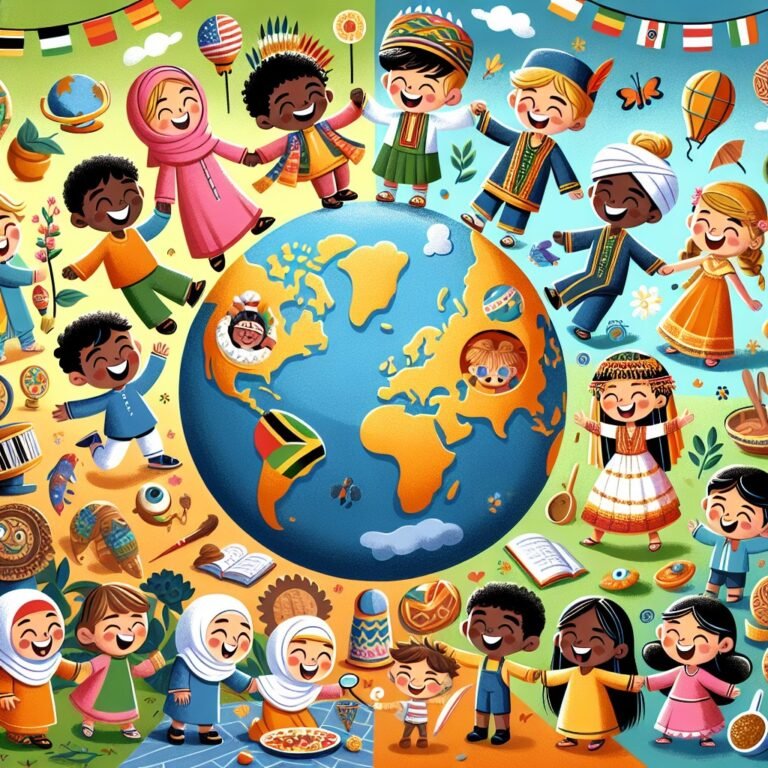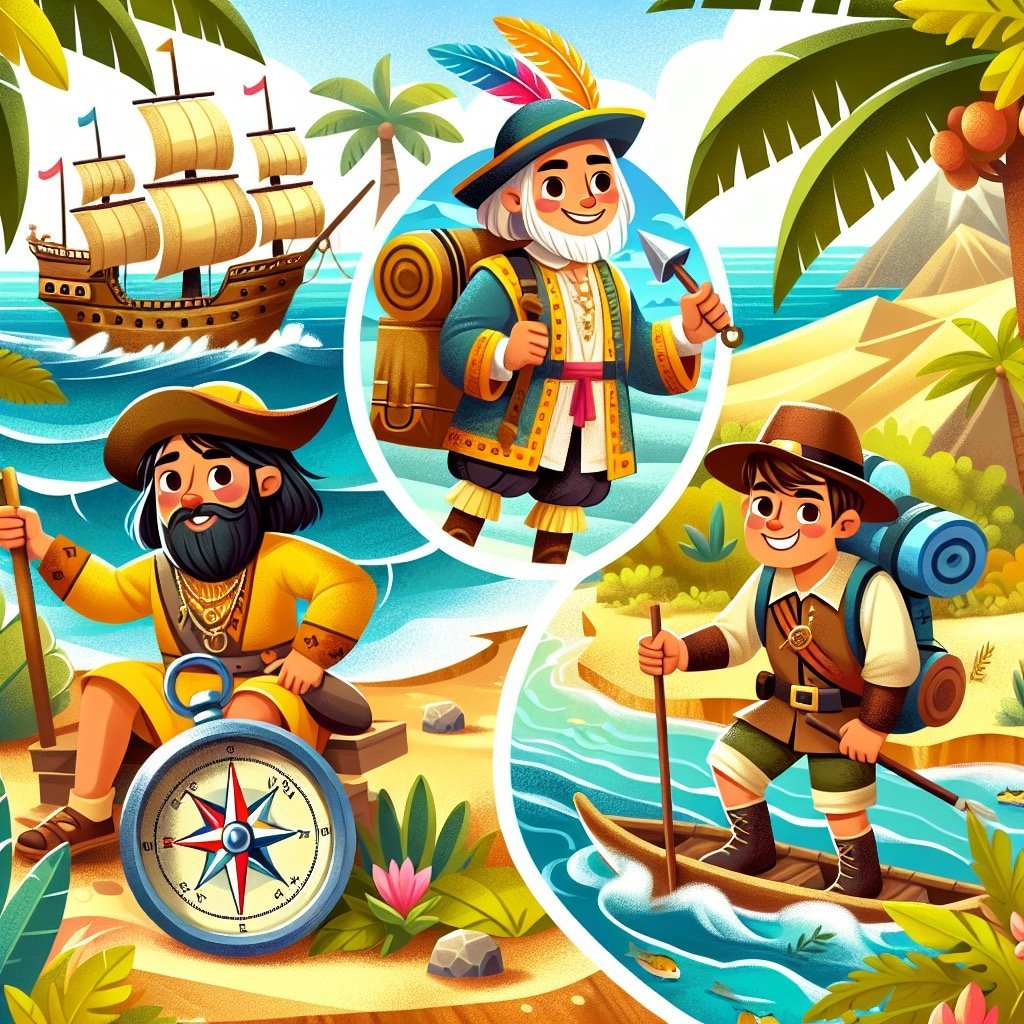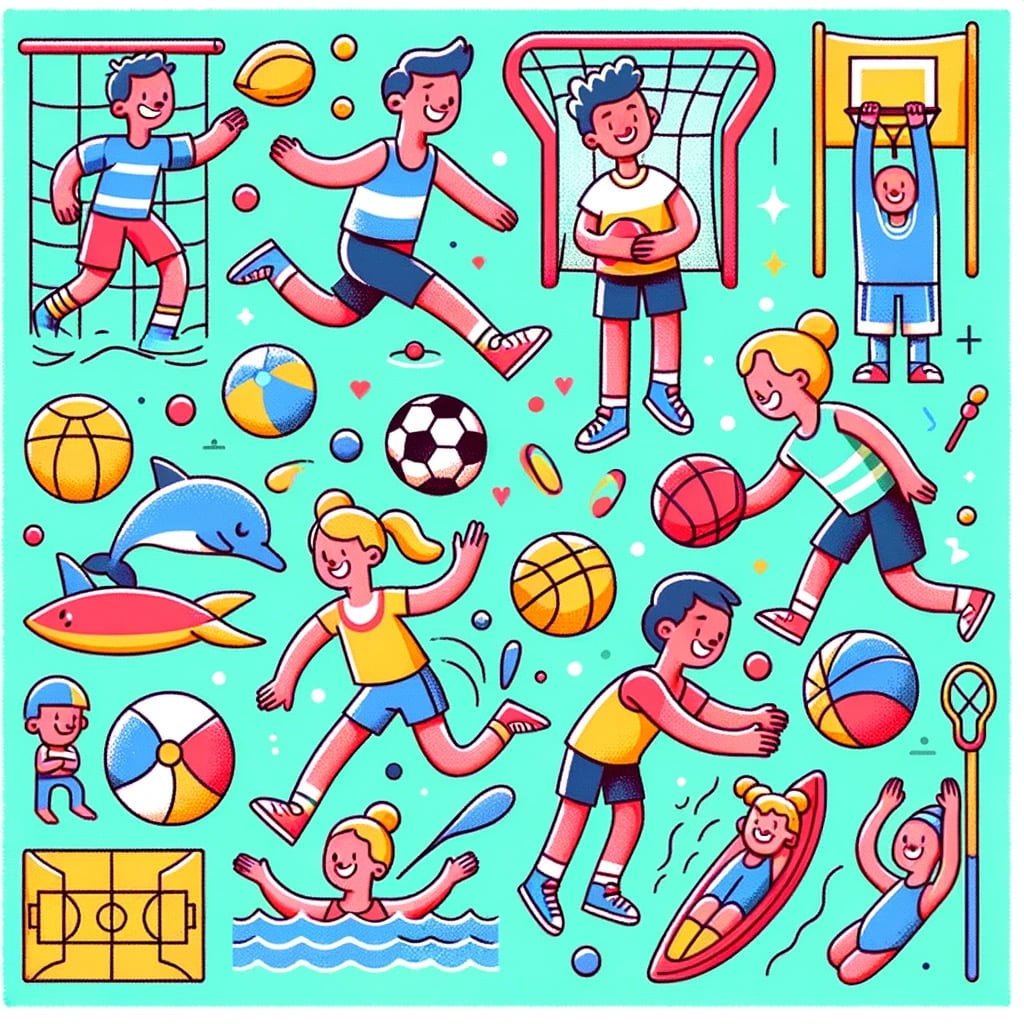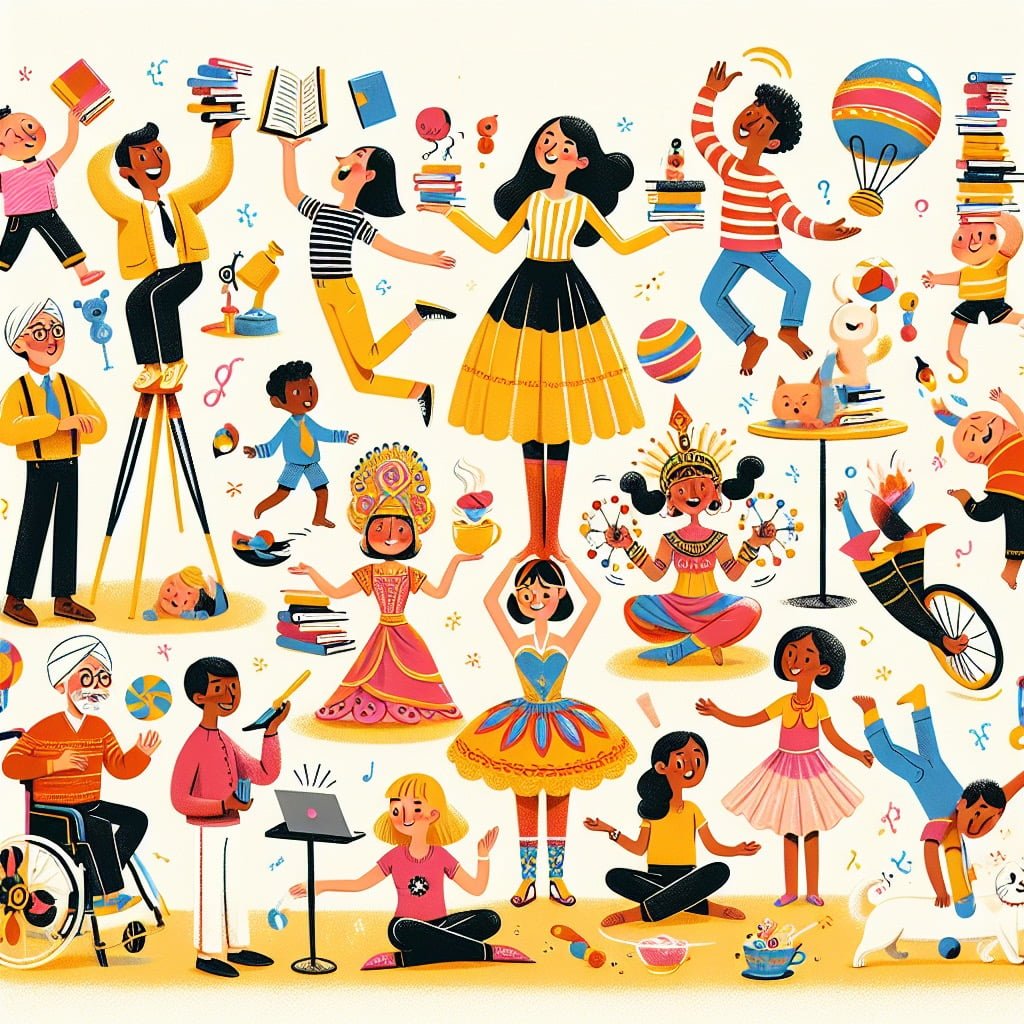Welcome to a world of fascinating discoveries and enchanting revelations about different cultures from around the globe! In this blog post, we will embark on an exhilarating journey filled with Fun Facts for Kids About Cultures. Delve into the mesmerizing world of the Maasai people of East Africa, the linguistic tapestry of India, the profound meaning of the Hawaiian word ‘Aloha’, and the vibrant traditions of the Scottish Highland Games. From traditional sports to storytelling through beaded necklaces, each culture unfolds its unique customs and heritage, offering a glimpse into the rich diversity of our world. So, get ready to be captivated by the wonders of different cultures and join us in celebrating the beauty of human civilization through these engaging and insightful fun facts. Let’s embark on this enlightening adventure together and broaden our horizons as we explore the colorful tapestry of human diversity!
Fun Facts for Kids About Cultures
1. The Maasai People of East Africa Jump Really High
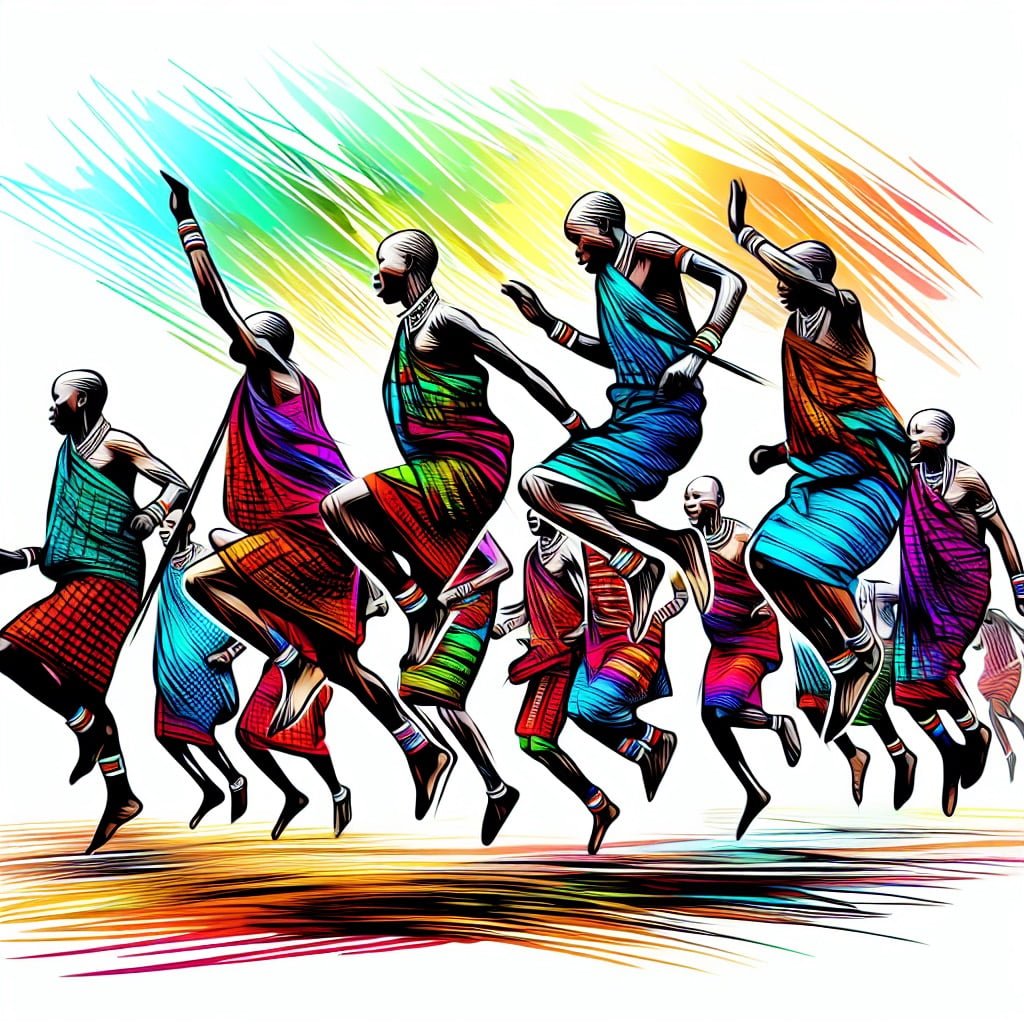
For younger kids: The Maasai people can jump really high!
For older kids: The Maasai people of East Africa are known for their extraordinary jumping ability, which is an important part of their culture and often performed during traditional dancing and ceremonies.
Detailed explanation:The Maasai people of East Africa are known for their impressive jumping abilities, which have been displayed in various cultural celebrations and traditional ceremonies. One particular event where their jumping skills are showcased is during the Eunoto ceremony, a rite of passage for young men transitioning into the warrior class.
During the Eunoto ceremony, the Maasai men participate in a jumping competition known as the “adamu.” This competition involves the men taking turns to jump as high as possible in order to demonstrate their strength and agility. The higher a man can jump, the more respect and admiration he earns from his fellow tribe members. The adamu competition is not only a test of physical ability but also a way for the men to showcase their bravery and determination.
The Maasai people’s jumping abilities can be attributed to their lifestyle and cultural practices. From a young age, Maasai boys are encouraged to practice jumping as a way to strengthen their leg muscles and improve their endurance. They also engage in herding cattle, which requires agility and quick reflexes to navigate rough terrain.
In addition to the physical benefits, jumping plays a significant role in Maasai culture as a form of communication and expression. For example, a high jump may symbolize victory in battle or a successful hunt. It is also a way for the Maasai to celebrate their cultural heritage and preserve their traditions for future generations.
In conclusion, the Maasai people’s ability to jump really high is a testament to their physical prowess and cultural significance. By participating in events like the adamu competition, they not only showcase their skills but also pass down Fun Facts for Kids About Cultures to younger members of the tribe.
Fun Facts for Kids About Cultures
2. India is Home to 1,652 Languages
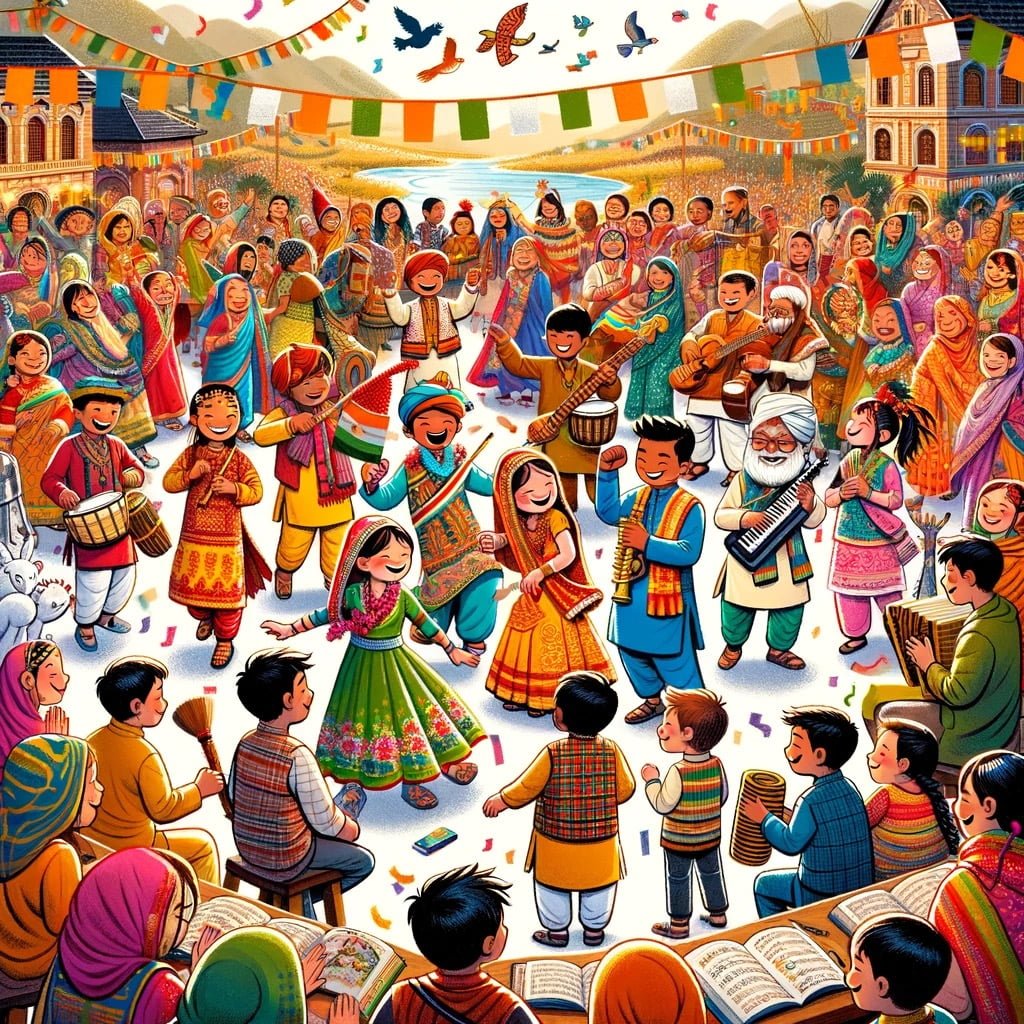
For younger kids: India has lots and lots of different languages!
For older kids: India is incredibly diverse, with an astonishing 1,652 languages spoken across the country, showcasing the rich tapestry of different cultures and traditions.
Detailed explanation:India is a culturally diverse country with a rich linguistic heritage, making it home to a vast array of languages. In fact, India is home to a staggering 1,652 languages, making it one of the most linguistically diverse countries in the world. This diversity is a reflection of India’s long history, varied geography, and numerous ethnic groups that call the country home.
One of the most fascinating aspects of India’s linguistic diversity is the fact that many of these languages are spoken by relatively small populations. For example, while Hindi and Bengali are two of the most widely spoken languages in India, there are also many smaller languages that are spoken by just a few thousand people. This incredible linguistic diversity is a testament to the country’s rich tapestry of cultures and traditions.
Fun Facts for Kids About Cultures can be a great way to introduce young learners to the incredible linguistic diversity of India. By learning about the various languages spoken in different parts of the country, children can gain a greater appreciation for the unique cultural heritage of India. They can also learn about the importance of preserving these languages for future generations, as language is a crucial part of cultural identity.
In conclusion, India’s 1,652 languages are a testament to the country’s rich cultural heritage and diversity. By exploring Fun Facts for Kids About Cultures, young learners can gain a deeper understanding of the importance of language in shaping cultural identity and preserving traditions.
Fun Facts for Kids About Cultures
3. The Hawaiian Word ‘Aloha’ Means More Than Just Hello

For younger kids: ‘Aloha’ means hello and goodbye in Hawaii!
For older kids: In Hawaiian culture, ‘Aloha’ represents love, peace, compassion, and a deep connection to the land and one another, making it a truly special and meaningful word.
Detailed explanation:One of the most well-known Hawaiian words is “aloha”, which is often used as a greeting or farewell. However, the word “aloha” actually carries a much deeper and more significant meaning than just “hello” or “goodbye”. In Hawaiian culture, “aloha” encompasses a spirit of love, compassion, and kindness towards others. It is a way of living and treating others with respect and empathy.
In addition to being a greeting, “aloha” also serves as a reminder to live in harmony with the people and the world around us. It encourages a sense of unity and interconnectedness with others, as well as a deep appreciation for the beauty of nature and the environment. In essence, “aloha” represents a way of life that is centered around love, positivity, and understanding.
In Hawaiian culture, the concept of “aloha” extends beyond mere words and encompasses a set of values and beliefs that are deeply rooted in the island’s history and traditions. It serves as a guiding principle for how individuals should interact with one another and with the world at large. By embodying the spirit of “aloha”, individuals can cultivate a sense of community, belonging, and mutual respect.
In conclusion, the Hawaiian word “aloha” goes far beyond its simple translation as “hello” or “goodbye”. It is a powerful concept that embodies love, compassion, and unity, and serves as a beautiful reminder of the importance of treating others with kindness and respect. Fun Facts for Kids About Cultures like the Hawaiian culture can teach us valuable lessons about the importance of living with empathy and understanding towards others.
Fun Facts for Kids About Cultures
4. Inuit People Have Over 50 Words for Snow
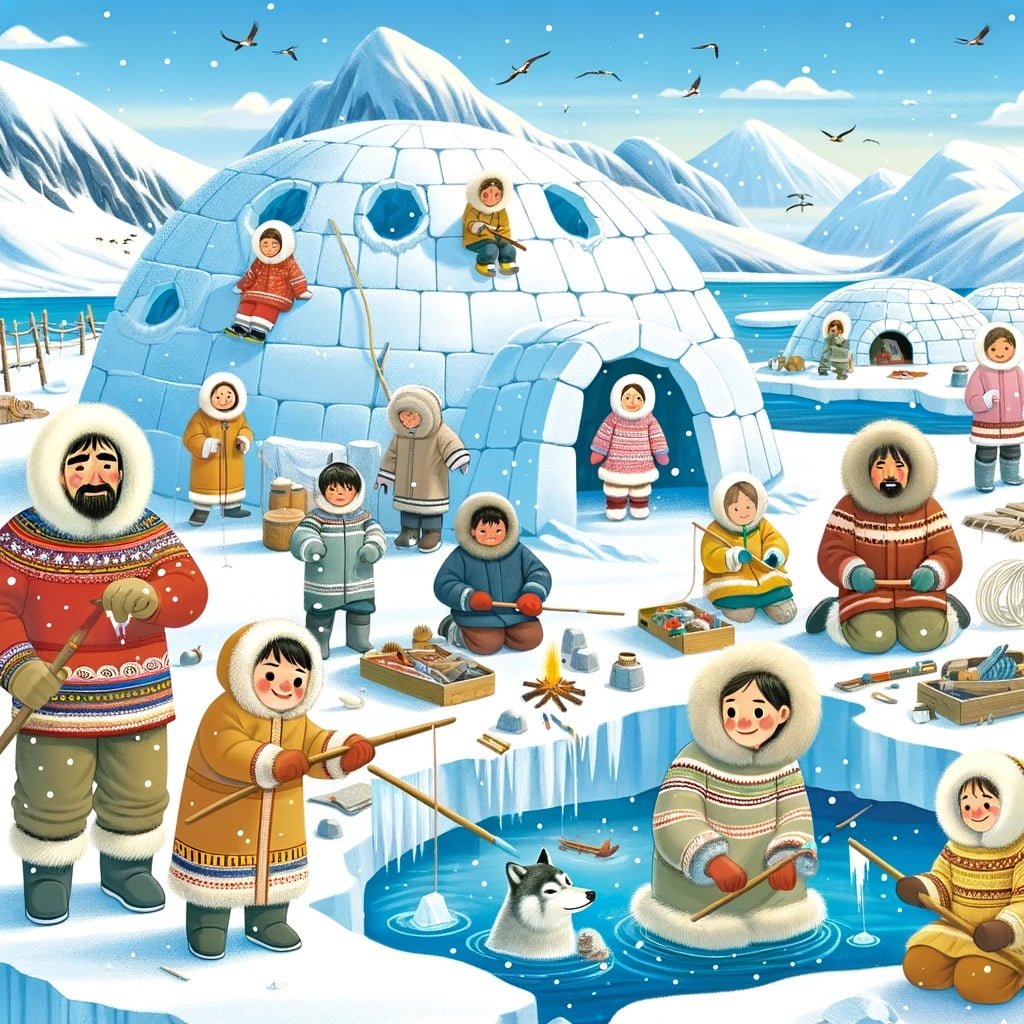
For younger kids: The Inuit people have lots of words for snow!
For older kids: The Inuit people have a rich vocabulary for describing snow, with over 50 different terms, reflecting the significance of snow in their culture and daily life.
Detailed explanation:One fascinating aspect of various cultures around the world is the diversity in language and the unique ways in which different groups of people express concepts. An example of this can be seen in the Inuit people, who have an impressive array of words for snow. This fact has captured the imagination of many, highlighting the deep connection the Inuit have with their environment and the importance of snow in their daily lives.
The Inuit people live in the Arctic regions of North America, where snow is a constant presence for much of the year. As a result, they have developed a rich and nuanced vocabulary to describe the different types of snow they encounter. These words not only differentiate between various forms of snow, such as light and fluffy versus wet and compacted, but also convey important information about the texture, consistency, and quality of the snow.
For example, the Inuit may have a word for “qanik,” which refers to fresh, powdery snow that is ideal for playing and making snowballs. On the other hand, they may also have a word for “aput,” which describes snow that is wet and heavy, making it difficult to navigate through. By having such a comprehensive vocabulary for snow, the Inuit are able to communicate more effectively about their environment and make informed decisions based on the conditions they encounter.
Overall, the Inuit people’s extensive lexicon of words for snow is not just a linguistic curiosity, but a reflection of their deep understanding and respect for the natural world around them. It serves as a reminder of the intricate relationship between language, culture, and the environment, offering a unique perspective on the ways in which different societies interact with and interpret the world. Fun facts for kids about cultures such as this demonstrate the richness and complexity of human diversity, inviting us to appreciate the unique insights that each culture brings to our collective understanding of the world.
Fun Facts for Kids About Cultures
5. Italy Has the Most UNESCO World Heritage Sites
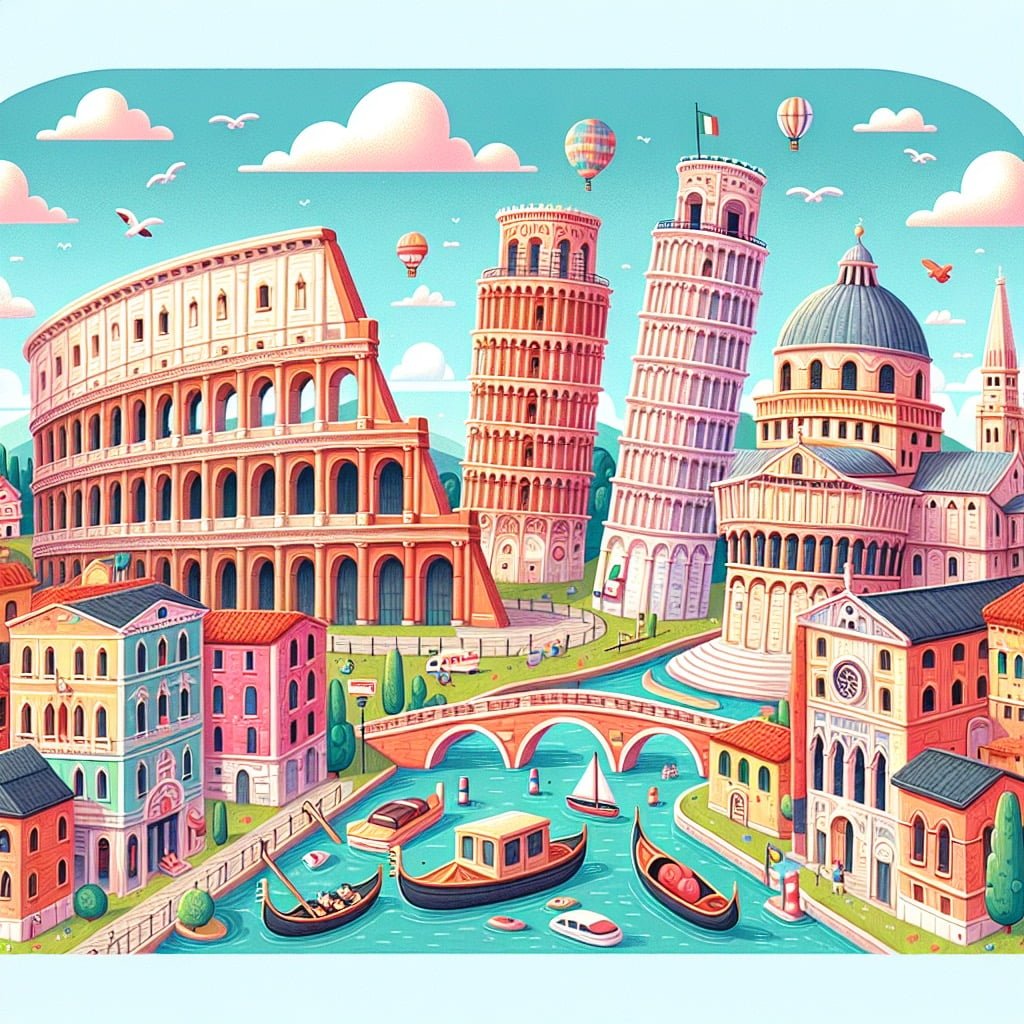
For younger kids: Italy has lots of really special places that are very old!
For older kids: Italy boasts an impressive 58 UNESCO World Heritage Sites, including historic centers, archaeological sites, and cultural landmarks that showcase the country’s rich history and influence on the world.
Detailed explanation:Italy is renowned for its rich cultural heritage, making it a fitting country to hold the title of having the most UNESCO World Heritage Sites in the world. With a total of 58 sites scattered throughout the country, Italy boasts an impressive array of cultural landmarks that showcase its historical significance and artistic contributions.
These UNESCO World Heritage Sites in Italy encompass a wide range of cultural wonders, including ancient ruins such as the Colosseum in Rome and the archaeological areas of Pompeii, Herculaneum, and Torre Annunziata. These sites offer a glimpse into the ancient civilizations that once thrived in Italy and provide valuable insights into their daily lives and cultural practices.
In addition to ancient ruins, Italy is also home to numerous Renaissance and Baroque masterpieces, such as the historic centers of Florence and Rome, the art-filled Vatican City, and the stunning Venetian lagoon with its picturesque canals and palaces. These sites are a testament to Italy’s rich artistic heritage and the influential role it has played in shaping Western art and culture.
Visiting these UNESCO World Heritage Sites in Italy is not only a memorable experience but also an educational one, offering visitors a unique opportunity to learn about different cultures and traditions. By exploring these cultural landmarks, visitors can gain a deeper appreciation for Italy’s fascinating history and its enduring influence on global culture. Fun Facts for Kids About Cultures can be found in every corner of Italy, making it a must-visit destination for anyone interested in exploring the diverse cultural heritage of this remarkable country.
Fun Facts for Kids About Cultures
6. The Korean New Year is Celebrated for 3 Days
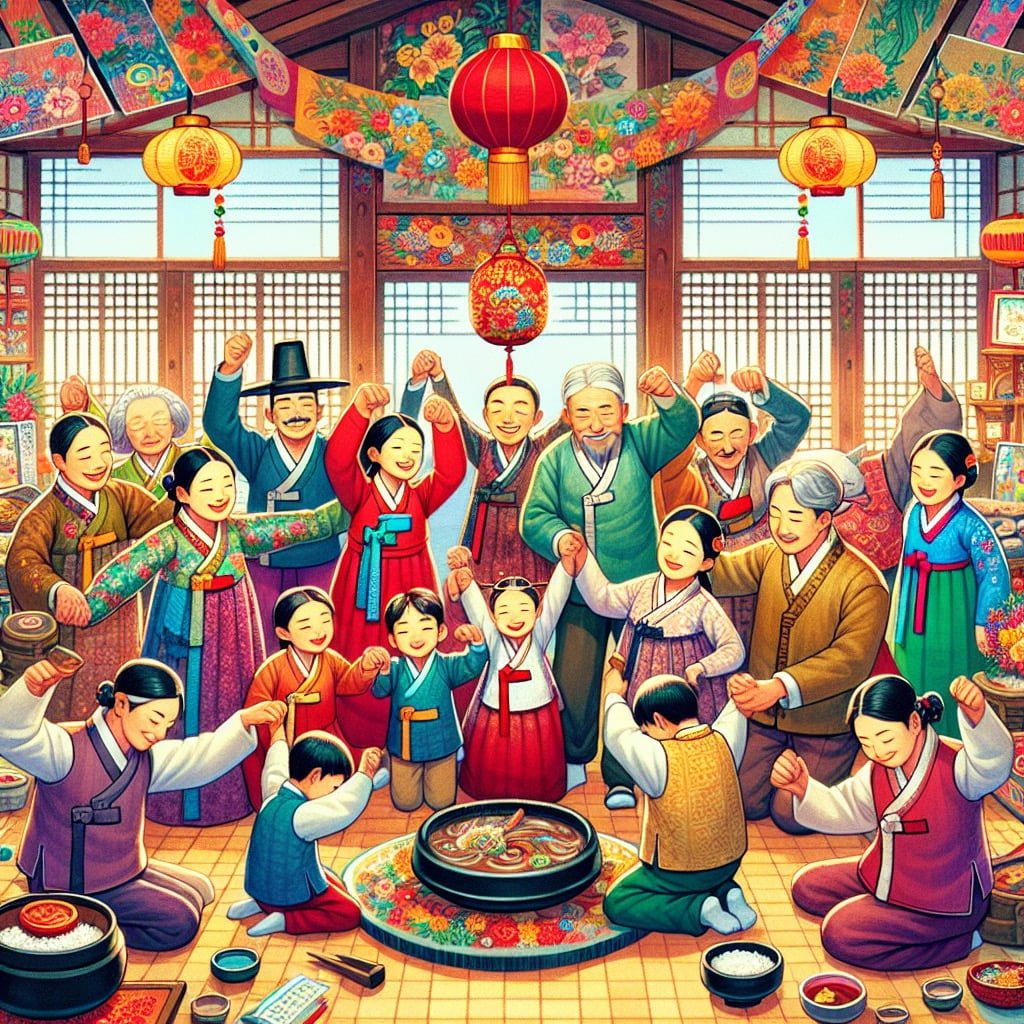
For younger kids: In Korea, the new year is a big celebration that lasts for 3 days!
For older kids: Korean New Year, known as ‘Seollal’, is a major holiday celebrated with three days of traditional customs, family gatherings, special foods, and cultural rituals to welcome the new year.
Detailed explanation:The Korean New Year, also known as Seollal, is a traditional holiday that is celebrated for three days in South Korea. This holiday holds great importance in Korean culture, as it is a time for families to come together and honor their ancestors.
On the first day of the Korean New Year, families gather to perform ancestral rituals known as Charye. During this time, they pay respects to their ancestors by offering food and drinks at a special ancestral table. This is a time for reflection and gratitude towards the ancestors who have paved the way for the current generation.
The second day of Seollal is known as Tteokguk Day, where families gather once again to enjoy a traditional meal of Tteokguk, a Korean rice cake soup. Eating Tteokguk is believed to bring good luck and symbolizes growing one year older. On this day, children also receive blessings and well-wishes from their elders, as it is believed to bring them good fortune in the coming year.
The final day of the Korean New Year is a time for visiting extended family members and relatives. People travel to their hometowns to visit their elders and exchange gifts as a gesture of respect and love. This tradition strengthens family bonds and promotes unity within the community.
In conclusion, the Korean New Year is a significant cultural holiday that is celebrated for three days, emphasizing the values of family, tradition, and gratitude. It serves as a time for reflection, celebration, and unity among the Korean people. Fun Facts for Kids About Cultures can help children understand and appreciate the diverse traditions and customs that make up our world.
Fun Facts for Kids About Cultures
7. The Native American Navajo Tribe Created the First “Code Talkers”
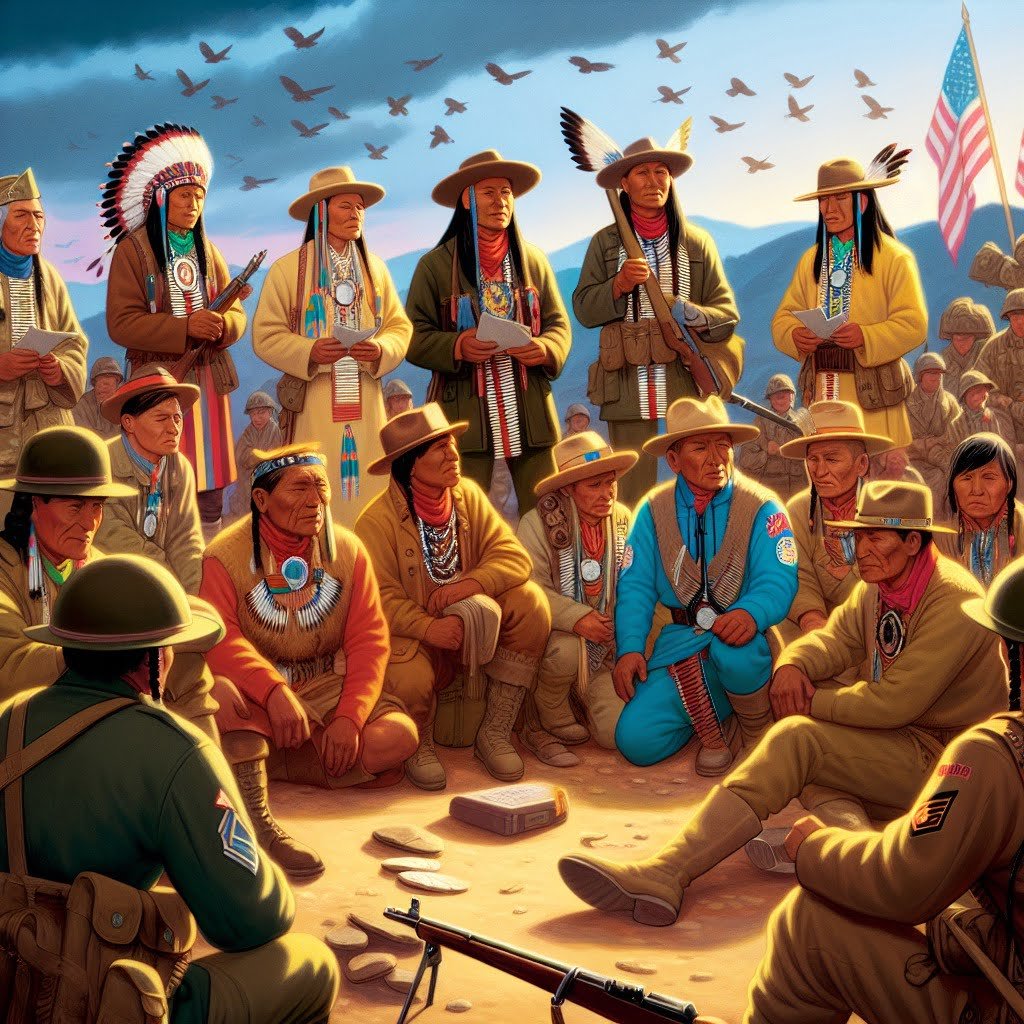
For younger kids: The Navajo people helped in a secret way during a war!
For older kids: During World War II, the Navajo Tribe developed a secret code based on their complex language, which was used to send unbreakable coded messages and played a crucial role in the war effort.
Detailed explanation:One fascinating piece of history revolves around the Native American Navajo tribe and their important role in World War II. The Navajo people played a pivotal role in the war effort as the first “code talkers.” Code talkers were bilingual speakers who transmitted secret military messages using their native language as a code that the enemy could not decipher.
The Navajo language, with its complex syntax and unique tonal qualities, proved to be an invaluable asset for the United States military. The code talkers used their language to create an unbreakable code that stumped even the most skilled cryptographers. The Japanese and German forces were unable to crack the code, giving the Allies a crucial advantage in the war.
The contributions of the Navajo code talkers were instrumental in the success of many key military operations in the Pacific theater. The code talkers were involved in transmitting messages that were critical to the success of battles such as Iwo Jima and Guadalcanal. Their bravery and ingenuity helped to secure important victories for the Allied forces.
This remarkable story not only highlights the bravery and resilience of the Navajo people, but also serves as a powerful reminder of the importance of diverse cultures in shaping world events. The Navajo code talkers’ unique language and cultural heritage played a significant role in the outcome of the war, demonstrating the value of understanding and respecting different cultures.
In conclusion, the story of the Navajo code talkers is a compelling example of how cultural diversity can be a powerful asset in times of conflict. Learning about the role of the Navajo tribe in World War II provides important insights into the impact of culture on history and the importance of honoring and preserving diverse cultural traditions. Fun facts for kids about cultures can help to educate and inspire future generations about the valuable contributions of different cultures to our shared history.
Fun Facts for Kids About Cultures
8. Thai People Celebrate the New Year with Water Festival
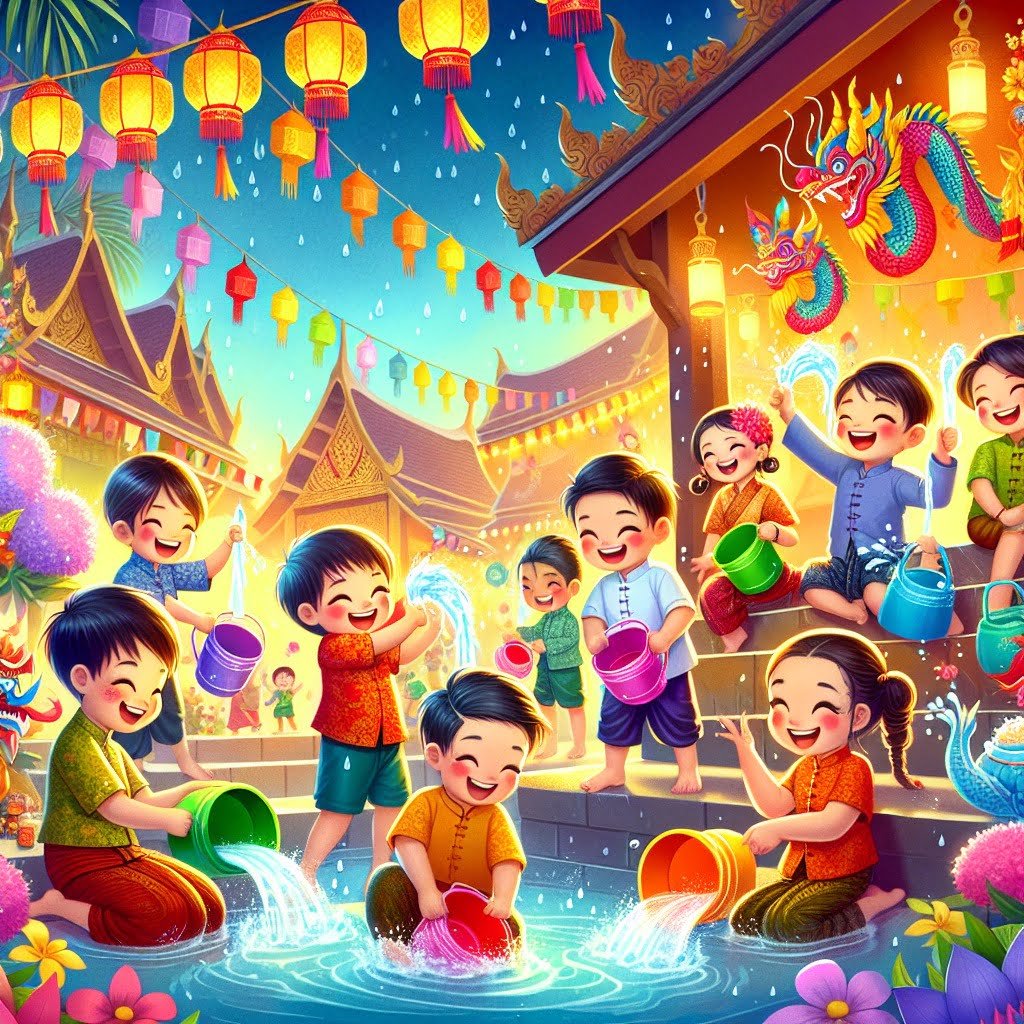
For younger kids: In Thailand, they have a big water fight to celebrate the new year!
For older kids: Songkran, the Thai New Year, is celebrated with the world’s largest water fight, symbolizing the washing away of the past and bringing good luck for the coming year.
Detailed explanation:One fun fact for kids about cultures is that the Thai people celebrate the New Year with a vibrant water festival known as Songkran. This festival, which takes place in mid-April, is a time of joy and renewal for the Thai people.
During Songkran, people take to the streets to participate in water fights, using buckets, water guns, and even elephants spraying water. This tradition of splashing water on each other is believed to symbolize washing away the bad luck from the past year and welcoming the new year with a fresh start.
In addition to the water fights, the Thai people also participate in rituals at temples, such as pouring water over Buddha statues as a sign of respect and purification. There are also parades, cultural performances, and delicious food to enjoy during this festive time.
Songkran is not only a time of celebration for the Thai people but also a time for family reunions and paying respect to elders. It is a time when communities come together to celebrate the new year and strengthen their bonds with each other.
Overall, the Songkran water festival is a fun and meaningful tradition that showcases the rich culture and traditions of the Thai people. It is a time of joy, renewal, and unity, making it a truly special event to experience.
Fun Facts for Kids About Cultures
9. The Masai Tribe Use Beaded Necklaces to Tell Stories
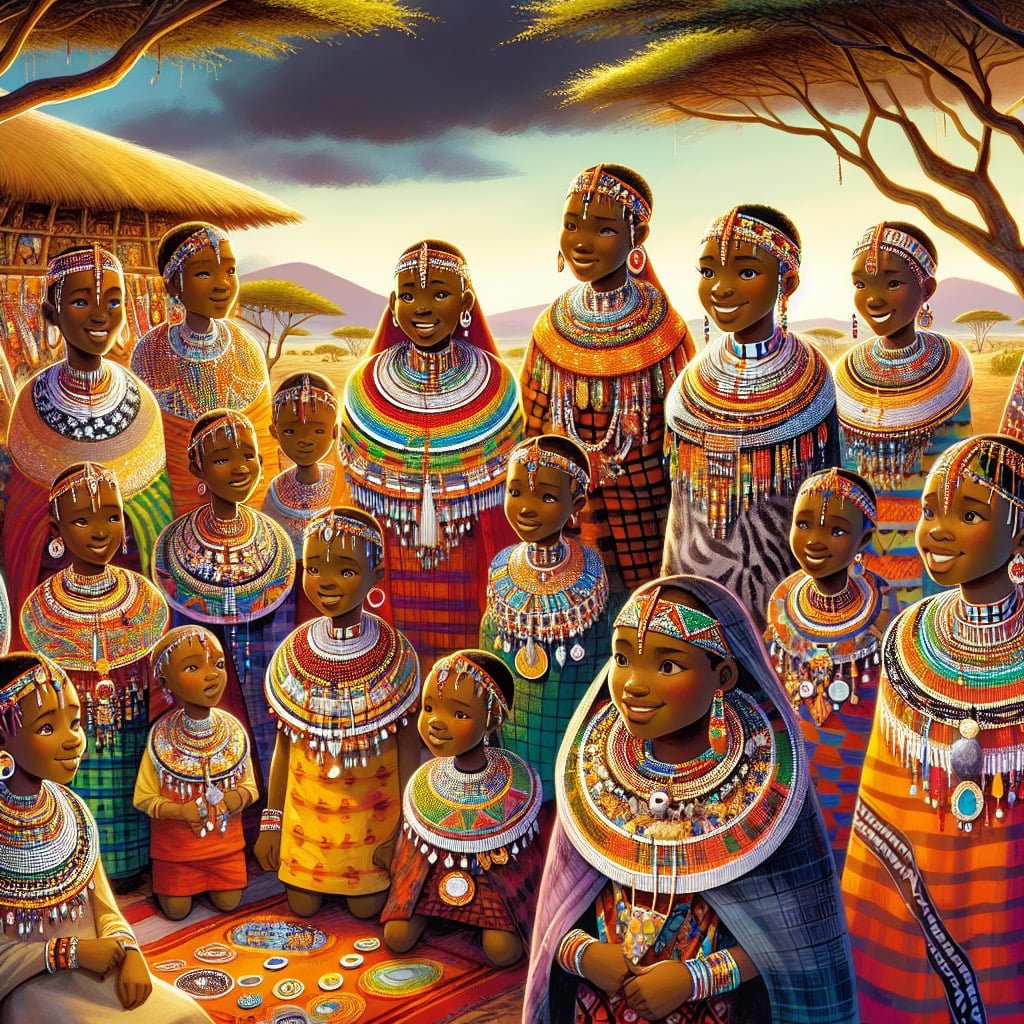
For younger kids: The Maasai people have really pretty necklaces that tell stories!
For older kids: The Maasai tribe uses intricate beaded necklaces to convey stories, traditions, and cultural heritage, with each pattern and color holding specific meanings and significance within the community.
Detailed explanation:The Masai tribe of Kenya and Tanzania have a rich cultural tradition of using beaded necklaces as a way to tell stories and pass down their history from one generation to the next. These colorful and intricate necklaces are not just accessories, but important tools for preserving and sharing the tribe’s cultural heritage.
Each bead on a Masai necklace has its own significance and meaning, representing different aspects of their history, beliefs, and values. By stringing these beads together in a specific order, the Masai are able to create intricate patterns and designs that convey specific stories and messages. These stories can range from tales of bravery and heroism to accounts of important events in the tribe’s history.
The art of beadwork is highly revered among the Masai, and skilled artisans spend hours meticulously crafting these necklaces by hand. The intricate designs and vibrant colors of the beads make each necklace a unique work of art, reflecting the creativity and cultural pride of the Masai people.
For children growing up in the Masai tribe, these beaded necklaces are not only beautiful pieces of jewelry, but also important educational tools. By studying the patterns and colors of the beads, children can learn about their tribe’s history, traditions, and values. This hands-on approach to learning helps to ensure that the cultural knowledge and stories of the Masai tribe are passed down from one generation to the next.
In conclusion, the use of beaded necklaces by the Masai tribe to tell stories is a fascinating example of how different cultures preserve and share their heritage. By incorporating these fun facts for kids about cultures into their daily lives, the Masai are able to keep their traditions alive and thriving for future generations.
Fun Facts for Kids About Cultures
10. The Scottish Highland Games Feature Unique Traditional Sports
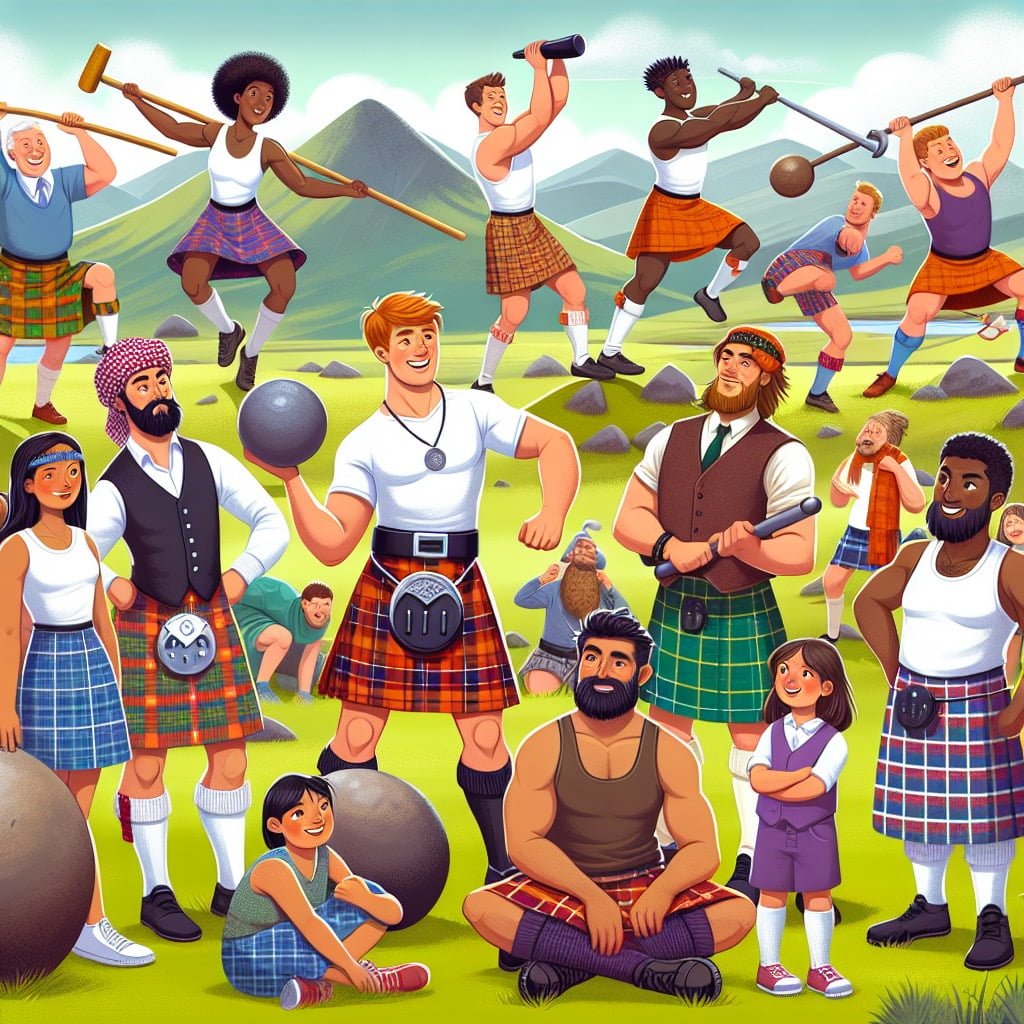
For younger kids: In Scotland, they play lots of games like throwing heavy things!
For older kids: The Scottish Highland Games feature a range of traditional sports and athletic competitions, including caber tossing, hammer throwing, and highland dancing, all tied to Scotland’s rich cultural heritage and history.
Detailed explanation:The traditional Scottish Highland Games are a beloved cultural event that showcase a variety of unique sports and activities that have been passed down through generations. These games are not only a source of entertainment and competition, but they also hold significant historical and cultural importance for the people of Scotland.
One of the most well-known events at the Highland Games is the caber toss, where participants compete to flip a large wooden pole end over end. This test of strength and skill has its roots in ancient Scottish traditions and was originally used as a way to determine which warriors were fit for battle. Other traditional sports featured at the Highland Games include the hammer throw, weight for height, and tug-o-war.
In addition to the athletic events, the Highland Games also feature traditional music, dance, and food, making it a true celebration of Scottish culture. Bagpipe performances, Highland dancing, and traditional Scottish cuisine such as haggis and Scotch eggs are all part of the festivities. Visitors to the games can immerse themselves in Scottish heritage and learn more about the rich history of this vibrant culture.
Overall, the Scottish Highland Games are a fun and exciting way to experience the unique traditions and customs of Scotland. These games are a reminder of the resilience and strength of the Scottish people, and they continue to be a popular event that brings communities together to celebrate their heritage. Fun Facts for Kids About Cultures can be found in the various activities and sports that are showcased at the Highland Games, offering a glimpse into the rich tapestry of Scottish history and tradition.
Did You Know?
Many cultures have special dances, music, and art forms that are unique to their traditions, reflecting the creativity and diversity of human expression around the world.
Fun Facts about Cultures for Kids
As an expert in cultural education for children, I believe it is essential for young minds to explore the fascinating world of different cultures through fun facts. Discovering the unique customs, traditions, languages, and beliefs of various societies can ignite curiosity and spark imagination in children. By delving into the rich tapestry of human diversity, kids can develop empathy, respect, and inclusivity towards people from different backgrounds.
Moreover, learning about cultures can positively impact a child’s cognitive development by exposing them to new perspectives and enhancing their communication skills. In today’s globalized world, cultural awareness and sensitivity are crucial for fostering a harmonious and interconnected society. By engaging in fun facts about cultures, children can become empowered global citizens who are equipped to navigate diversity with grace and understanding.
Therefore, I encourage parents and educators to inspire young ones to immerse themselves in the beauty of differences and celebrate the richness of each and every culture on our planet. Reading more about fun facts about cultures is not only a valuable educational experience but also a gateway to fostering a more inclusive and interconnected world for future generations.
Sources and additional information for Fun Facts for Kids About Cultures
WikipediaBritannicaKhan AcademyNational Institutes of Health (NIH)Psychology TodayNational Geographic – People & CultureUNESCO – Human RightsWorld Health Organization – Mental HealthTED Talks – HumanityHuman Rights WatchThe Guardian – Global DevelopmentHarvard Health – Mind & MoodUnited Nations – Humanitarian AffairsThe Atlantic – Health
